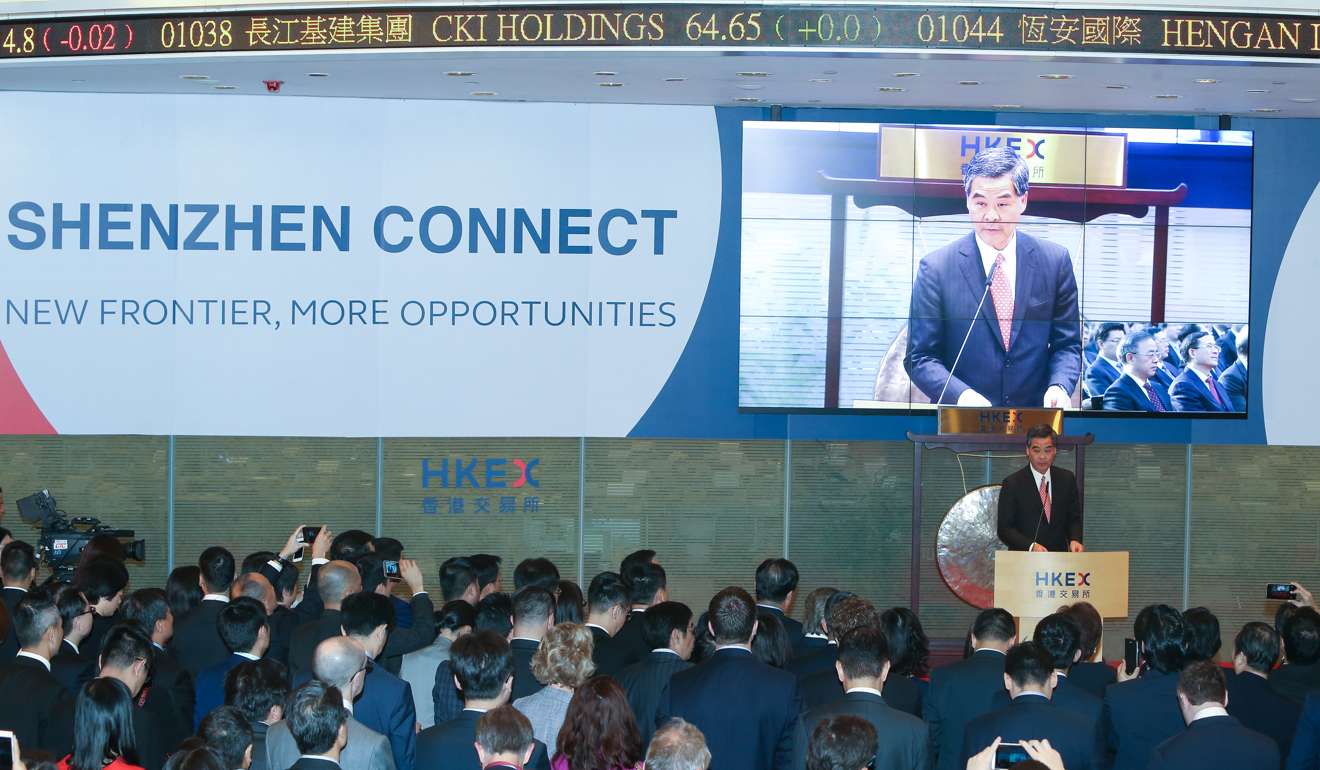
Is the mainland market maturing or just exported its volatility?
Over-speculative mood by mainland investors might now have filtered into the Hong Kong market, via the Stock Connect schemes resulting in roller-coaster rides for some H-shares
The latest figures on mutual fund stock investment adds to the growing evidence there’s been a shift in mood among mainland investors, who are prone to buying shares on valuation.
But that notoriously over-speculative mood by mainland investors might now have filtered into the Hong Kong market, via the Stock Connect schemes with the “pump and dump” strategies resulting in roller-coaster rides for some H-shares.
According to TX Investment Consulting, stock-focused mutual funds held Shanghai-listed shares worth 532.8 billion yuan (US$77.4 billion) at the end of 2016, way ahead of their holdings of small-cap stocks.
On the SME board at the Shenzhen Stock Exchange, the value of shares held by the funds stood at 266 billion yuan while their holding of ChiNext-listed shares was valued at 193.4 billion yuan.
They reported a combined holding of 459.4 billion yuan in Shenzhen.
In the mainland market, it’s the Shanghai exchange where large-cap, blue-chip stocks are traded, while the SME and ChiNext in Shenzhen are home to high-growth, smaller firms.
At the end of 2015, mutual funds owned 811 billion yuan worth of stock on the Shenzhen exchange, eclipsing their holding of 729.7 billion yuan in Shanghai.
Buying shares on fundamentals is considered a mere nicety on the A-share market.
In this largely retail-driven market, with the majority of turnover derived from trading by individual investors, small-cap stocks have long been perceived as a “goldmines” as many investors believe that wild price swings create opportunities for profit.

Despite some being badly burned after chasing short-term rallies, individual investors are yet to learn how to buy shares on valuation, according to Shenwan Hongyuan Securities analyst Qian Qimin.
But a shift in investment tactics by institutional investors, which hold the majority of shares traded in Shanghai, coupled with globally renowned asset managers still giving a vote of confidence to China’s stock market, is likely to be imitated among China’s 100 million retail players.
“Small investors need to follow a trend,” said Lin Miao, a Shanghai-based investor who habitually chases volatile movements in Shenzhen-listed stocks. “A flight of funds to big-cap companies is becoming more normal now.”
Buoyant producer price increases in the past two months bode well for the profit outlook of upstream manufacturers in China this year.
Analysts predict improved profitability among major industrial firms as the country looks to have successfully avoided any hard landing in the economy, following two years of effort by firms to de-leverage.
The government’s mixed-ownership reforms – which are seeing privately owned businesses taking stakes in state-owned juggernauts – has also emerged as a boost to blue-chip companies, such as China Unicom.
Beijing has picked six state-owned companies to trial mixed-ownership reforms on a pilot programme.
Though proving to be drawn-out, and staggering in size and complexity, the reforms has become a welcome new theme for investors on which to base their stock trading over the past month, particularly.
“The potential fund flows to big-cap stocks is still not adequate to draw the conclusion that mainland investors are maturing,” said Wang Feng, chairman of Shanghai-based financial services firm Ye Lang Capital. “I still expect them to return to investing in the ChiNext and SME markets in the near future.”
But in Hong Kong, an influx of speculative capital from the mainland has raised some market watchers’ eyebrows, prompting regulators to strengthen supervision of illegal trading activities.
The latest Hong Kong trading data shows that mainland capital was both the driver and dragging force behind price swings in some H-shares.
The potential fund flows to big-cap stocks is still not adequate to draw the conclusion that mainland investors are maturing. I still expect them to return to investing in the ChiNext and SME markets in the near future
The Stock Connect schemes, that facilitate cross-border share trading between the mainland and Hong Kong markets, has effectively helped the Shanghai and Shenzhen bourses to export some of their volatility to overseas counterparts.
Its shares had jumped by nearly 120 per cent from its offering price to HK$18 by March 17, but have since retreated 34.6 per cent, closing at HK$11.78 on Thursday.
When the mainland securities regulator began studying the launch of the two cross-border trading systems with Hong Kong counterparts about a decade ago, their man aim was to help develop the domestic stock exchanges in line with international practices.
In Hong Kong, free fund flows and established legal system are the solid foundation for a mature capital market.
But the mainland’s speculative investment mood is now increasingly being felt in Hong Kong, as a result of the two Connects.
In November, the China Securities Regulatory Commission announced it had spotted market manipulating practices by a clutch of mainland investors looking to take advantage of the Shanghai-Hong Kong Stock Connect, from which they managed to have pocket illicit gains of 300 million yuan.
It was the first time the regulators has successfully uncovered a fraud, via the use of the Stock Connect system.

